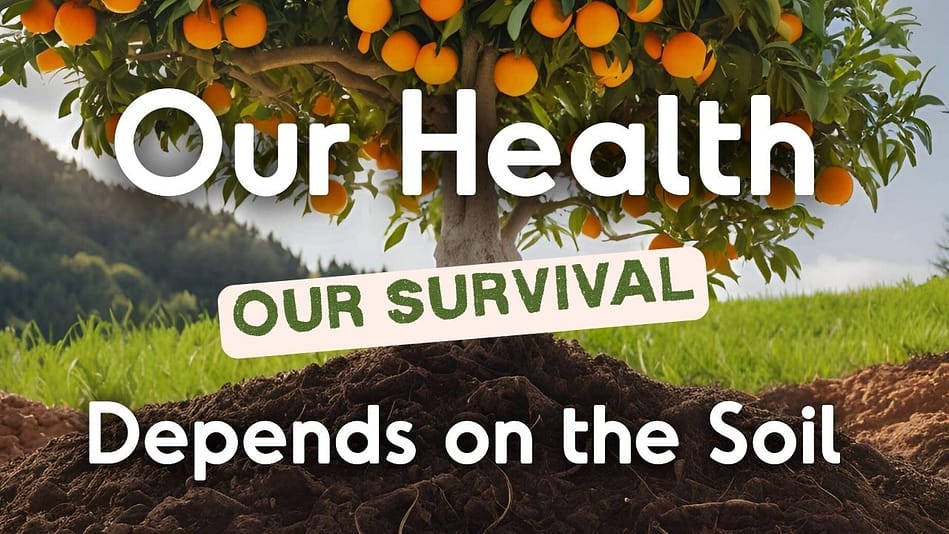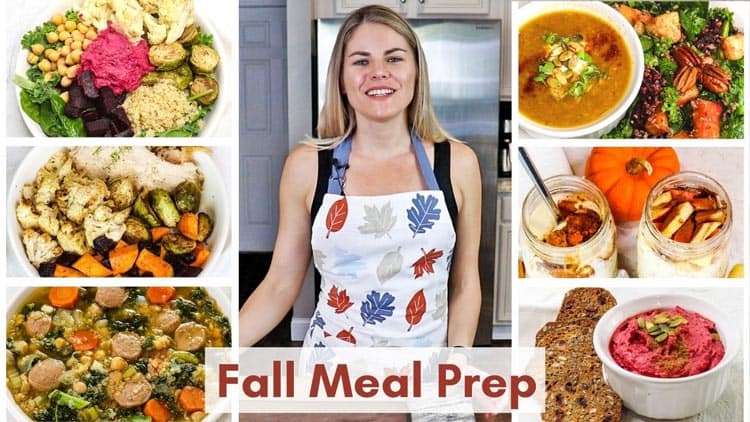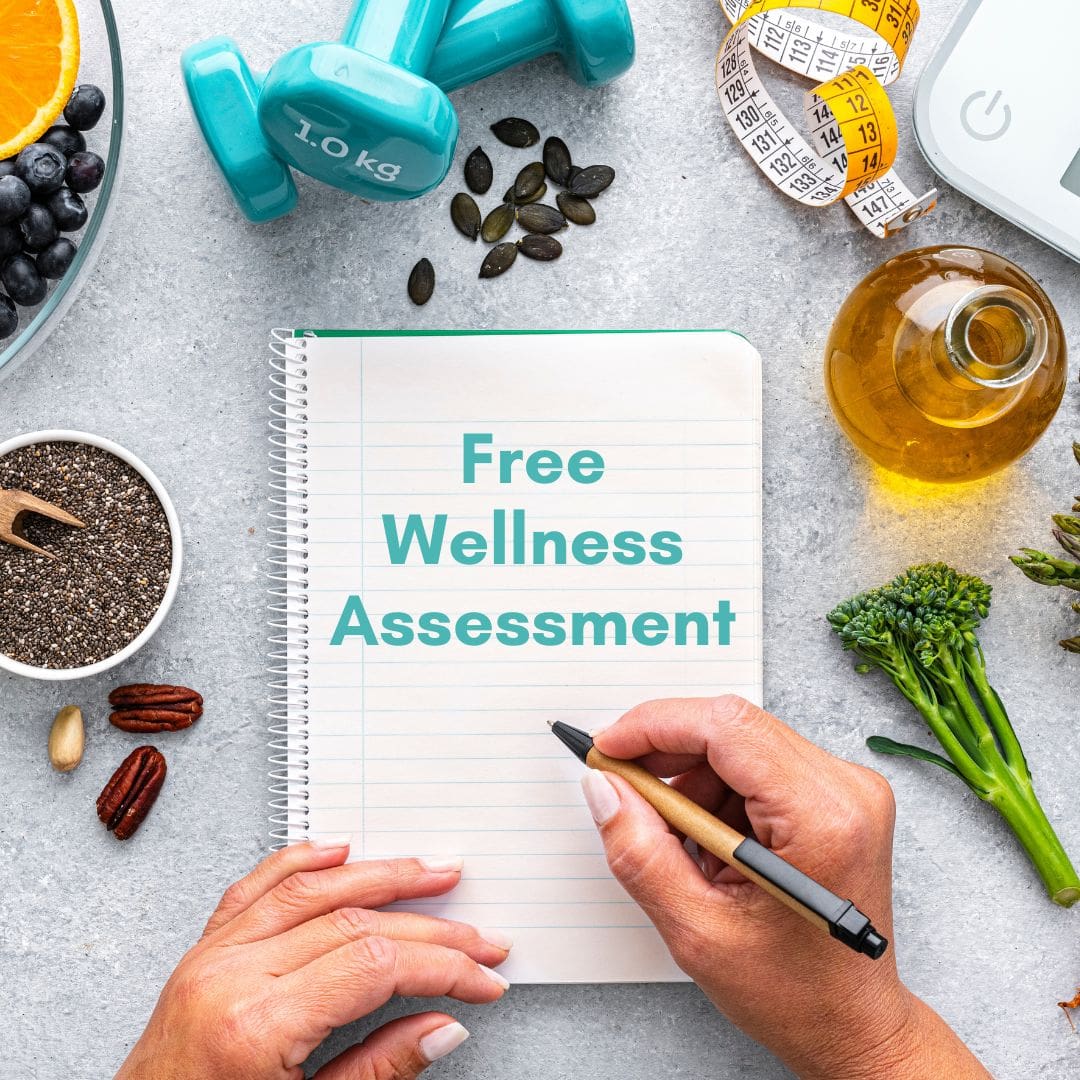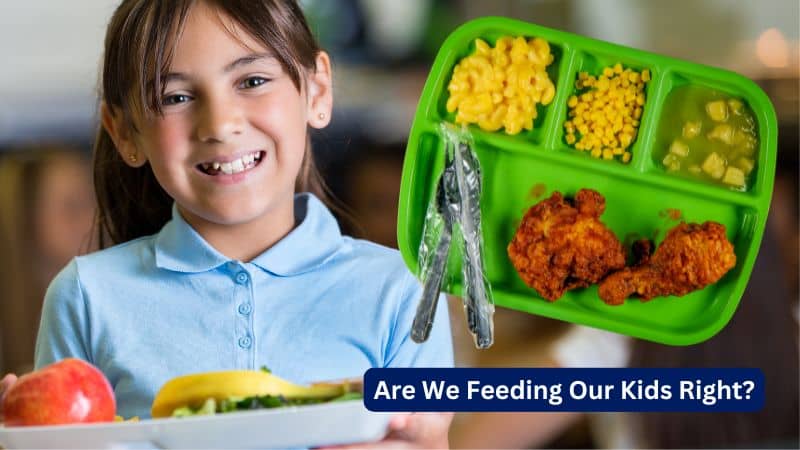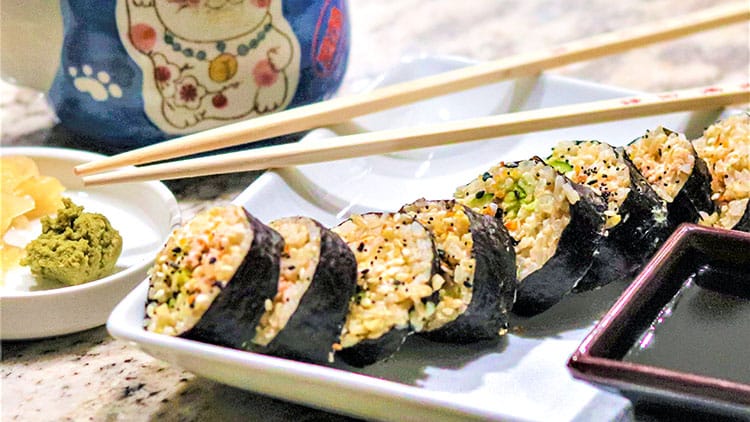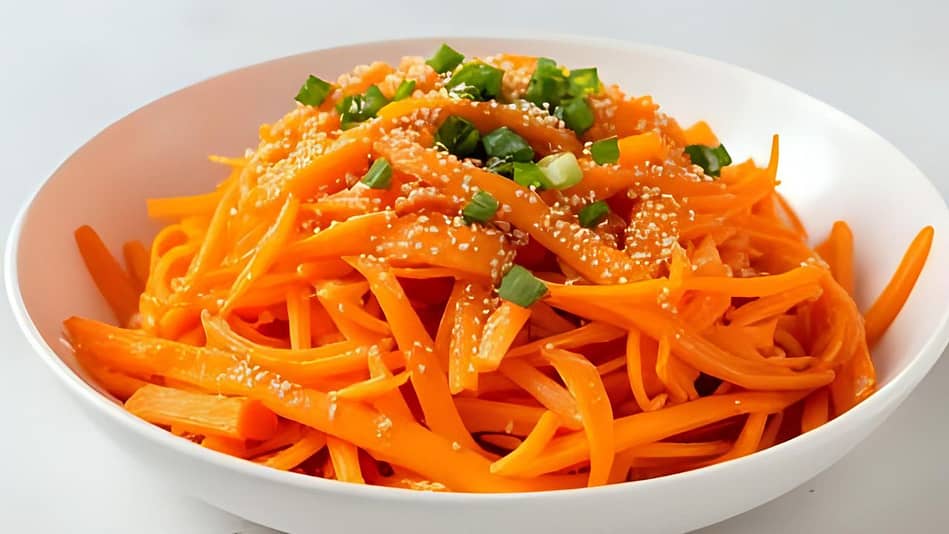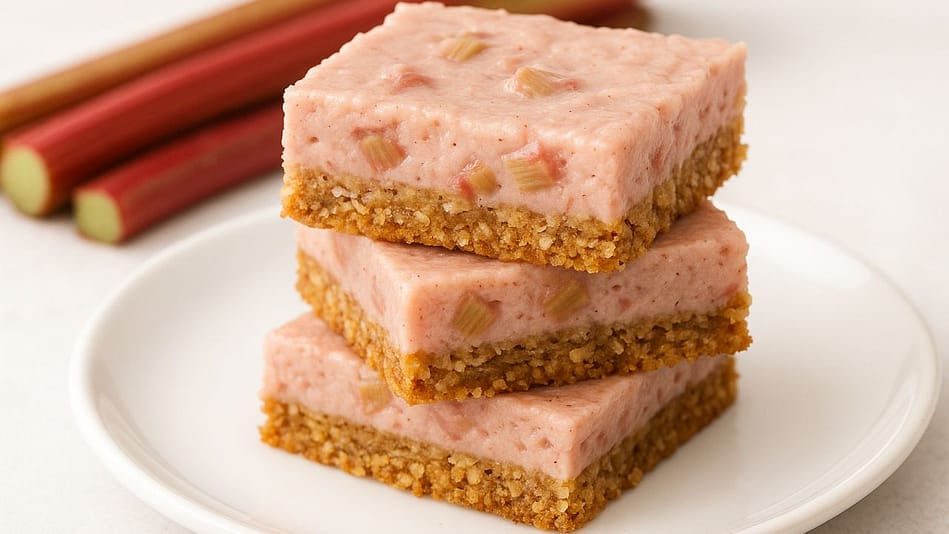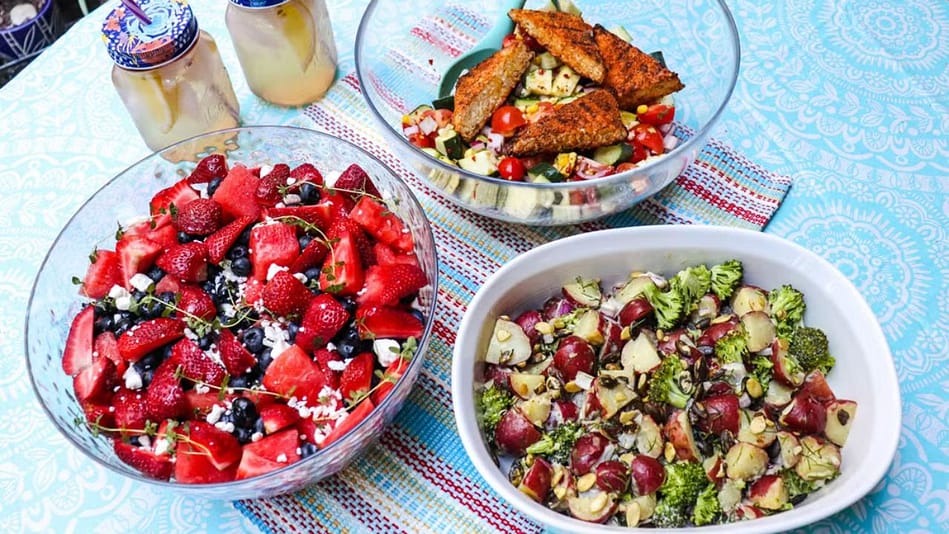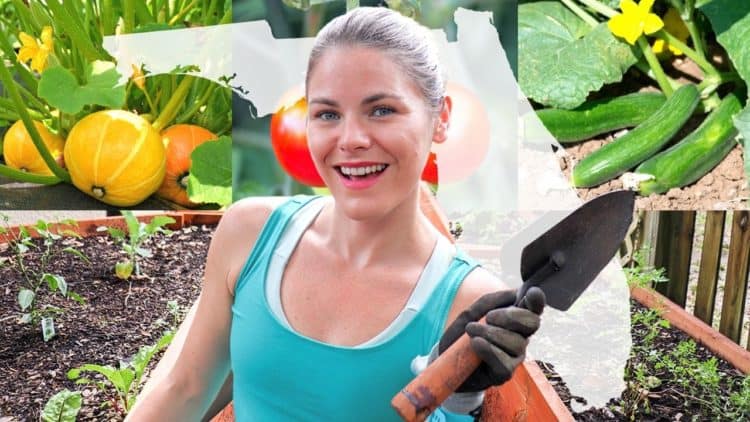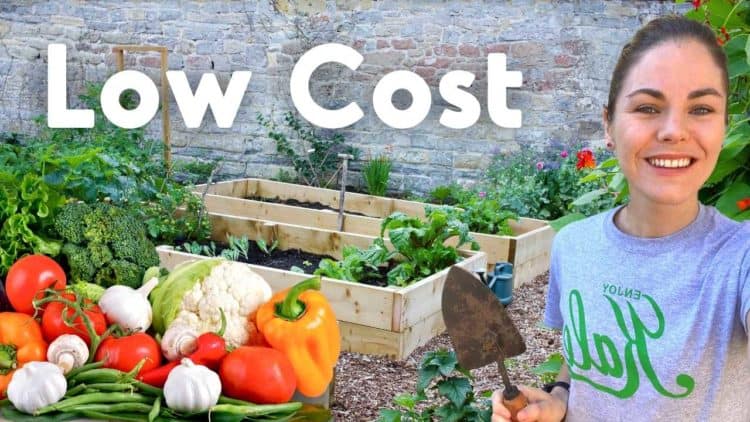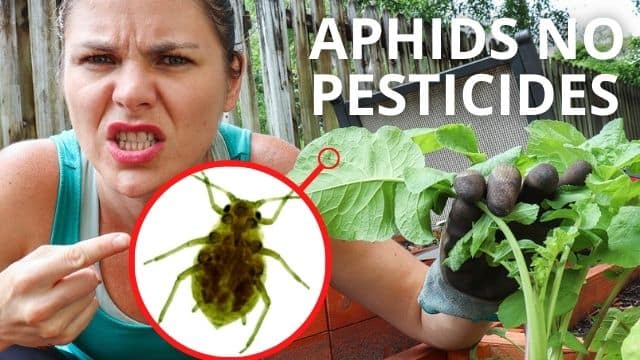Share This


Pages on this site may contain affiliate links, meaning if you book or buy something, I may earn an affiliate commission at no additional cost to you. Thank you for your support! Learn More
Also note: While I am a certified nutrition coach, I am not a medical doctor. Information here is not intended to be a replacement for the advice you should seek from your doctor.
Regenerative Food – When Organic Isn’t Enough
I almost gave up on gardening.
Trying to grow food in Florida sand — organically — felt like a battle I couldn’t win. Year after year, I leached my soil and left it bare, hoping solarizing would help. It didn’t. I was doing what I thought was right, but my garden wasn’t thriving — and honestly, I was struggling too.
A Nursing Mama’s Deep Dive into Dirt
Then, during the quiet newborn days nursing my son, I finally had time to dig into something besides diapers — and I went deep. I nerded out hard on organic gardening, permaculture, and regenerative practices. Like… book-expert level deep (without the practice… yet). And something clicked.
Instead of giving up, I gave in to the obsession (plants, nature, and veggies — duh). I started treating my soil like the living thing it is — feeding it a buffet of composted arbor chips, alfalfa meal, fish emulsion, and leaf mulch. I even kickstarted the microbial party with a honey-water spray (yes, my garden smelled like a fermented fish smoothie for a while — and I’m weirdly proud of that).
Compost, Zucchini, and a Whole Lot of Hope
And guess what? My plants are THRIVING. I’m getting my very first successful zucchini !. I compost obsessively — in the backyard bin, random garden holes, and hopefully soon, one of those dreamy kitchen composters (hello, future sponsor? 👀).
More than anything, I’ve become wildly passionate about how we grow food — not just for garden goals, but for wellness, family, and the planet. That’s why I believe regenerative foods deserve our attention.
❤️❤️ Don’t miss a recipe or post! Make sure you remember to sign up for my Newsletter and follow me on social ❤️❤️!
Get Your Free Stuff!
🍿 Want a Visual Crash Course?
Two must-watch documentaries helped fuel my obsession:
Kiss the Ground (Netflix) — A powerful intro to how regenerative farming can reverse climate change. Here is the trailer:
Common Ground (Rent on Apple TV, Prime Video, or YouTube) — The emotional sequel that highlights farmers, families, and what’s at stake. Here is this trailer (a sequence to the former):
These films aren’t just about dirt — they’re about hope, healing, and what’s possible when we rethink how food gets to our plates.
What Is Regenerative Food, Really?
If you’ve ever squinted at a grocery label and wondered “Okay, but what does regenerative actually mean?” — you’re not alone.
Regenerative food is simply food grown in a way that gives back more than it takes. It comes from farms and gardens that don’t just avoid harm (like organic tries to do), but actively heal the soil, the ecosystem, and even the climate.
It’s kind of like composting — but on a global scale. 🌍
Where industrial agriculture strips the land and floods it with synthetic fertilizers, regenerative farming works with nature:
- Building healthy, living soil full of microbes, fungi, and nutrients
- Planting diverse crops that support pollinators and reduce disease
- Avoiding tilling (which damages soil structure)
- Using compost, cover crops, and mulch to retain moisture and feed the earth
- Letting animals graze rotationally to fertilize and restore land naturally (for those who use livestock)
And here’s the part I love: even if you’re 100% plant-based, you can still support regenerative food systems. There are incredible regenerative veggie farms using zero animal inputs — just compost, mulch, and soil magic.
This isn’t just good for the planet. It’s good for your plate.
Regenerative food is often:
- More nutrient-dense, thanks to mineral-rich soil
- Lower in chemical residues, since synthetic pesticides and fertilizers aren’t used
- Better tasting — seriously, you haven’t lived until you’ve had a zucchini grown in compost and leaf mulch from your own backyard 😉
Next up, let’s talk about why regenerative food is good for your health — and not just in a woo-woo way.
🥕 How Regenerative Food Supports a Healthier You
Let’s be honest: we all want food that helps our families feel better — not just check a box for being “healthy.” That’s where regenerative food comes in. It’s not just about what’s not in your food (pesticides, GMOs, mystery chemicals) — it’s about what is.
More Than a Buzzword — It’s What’s in the Soil
Healthy soil is like nature’s multivitamin. When the soil is alive with microbes and rich in organic matter, the plants that grow in it tend to be more nutrient-dense. That means more:
- Magnesium (hello, mood support)
- Zinc (immune booster)
- Phytochemicals (those superhero compounds that fight inflammation)
And yes — studies suggest that regeneratively grown foods can have higher levels of certain vitamins and minerals. For instance, research comparing regenerative and conventional farms found that regeneratively grown crops contained, on average, more magnesium, calcium, potassium, and zinc, as well as higher levels of vitamins B1, B12, C, E, and K, and beneficial phytochemicals .
Regenerative Food = Lower Toxin Load
Because regenerative farmers skip the synthetic fertilizers, herbicides, and pesticides, you’re likely getting less chemical residue on your produce. That’s especially important for kids, pregnant or nursing moms, and anyone dealing with chronic issues like autoimmune conditions, ADHD, or hormone imbalances.
As someone who’s obsessed with food and raising a healthy, happy crew, I find that incredibly reassuring.
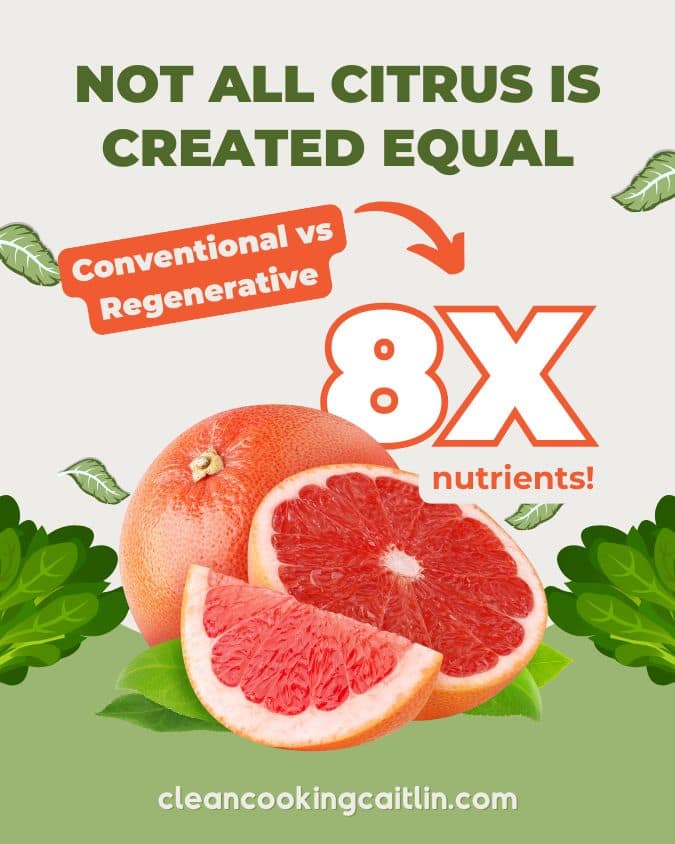

The Gut Connection
Here’s where it gets really cool — healthy soil and compost don’t just feed plants, they feed the microbes that feed your gut. It’s all connected:
- Compost feeds soil microbes
- Soil microbes help plants grow stronger
- Plants grown in healthy soil contain compounds that support your gut microbiome
- A happy gut = better digestion, mood, energy, and even immunity
It’s basically a microbial love story — from garden to gut.
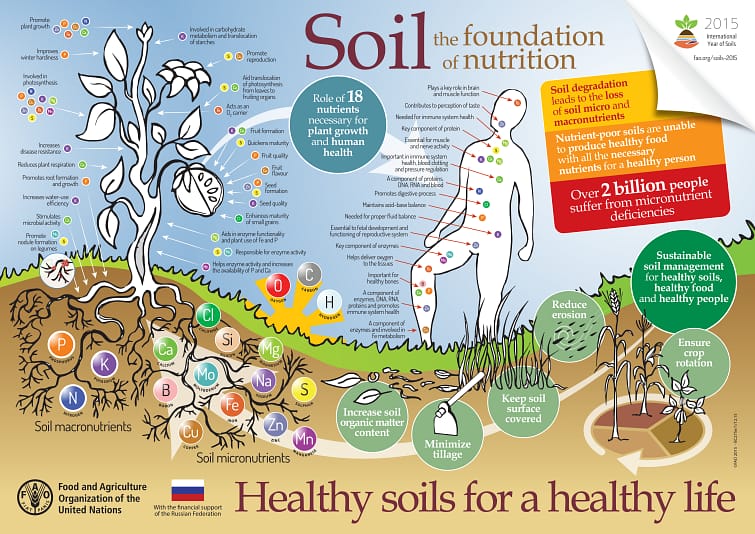

👩🌾 From the Ground Up: What Makes Food Truly Regenerative?
Now that we’ve talked about why regenerative food matters, let’s get into the how — because not all “eco-friendly” farming is created equal.
To truly grow regenerative food, farmers and gardeners focus on practices that build life below the surface. That means prioritizing soil health, biodiversity, and long-term resilience, not just short-term yields.
The Core Practices of Regenerative Farming
Here’s what sets regenerative farms apart:
- No-till or low-till soil prep
Tilling disrupts the delicate microbial ecosystem in the soil. Regenerative growers often skip it altogether, helping the underground community stay intact. - Cover cropping
Instead of leaving fields bare between growing seasons (which causes erosion and nutrient loss), regenerative farmers plant crops like clover, oats, or legumes to nourish and protect the soil. - Diverse crop rotation
Monocrops (looking at you, corn and soy) deplete soil. Rotating crops keeps the soil balanced and reduces the need for synthetic fertilizers or pest control. - Composting and natural soil amendments
Think compost, worm castings, fish emulsion, and organic fertilizers like alfalfa and kelp meal — yes, basically what I’m feeding my garden babies. - Thoughtful integration of animals
Some regenerative farms use rotational grazing with animals to fertilize naturally. (I don’t do this myself, but if I ever own goats, you’ll know why.)
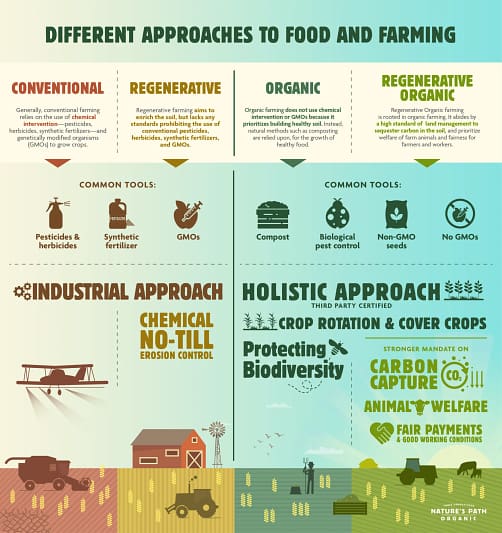

What This Looks Like in a Plant-Based Garden
If you’re a fellow veggie-lover, don’t worry — you can be part of the regenerative movement without raising livestock. Here’s how:
- Compost your food scraps
- Mulch with leaves or arbor chips
- Use plant-based fertilizers like alfalfa meal or seaweed
- Grow a variety of seasonal crops
- Let parts of your garden rest and rewild between plantings
The key is: work with nature, not against it. Whether you’re a backyard gardener or a market shopper, supporting regenerative food is something we can all do — no tractor required.
🛒 How to Find Regenerative Food at the Grocery Store or Farmers Market
Okay, so you’re not a farmer. You’re not even composting (yet). But you are eating — and that means you’ve got power.
Supporting regenerative food doesn’t require land, livestock, or a soil microscope (though if you have one, let’s be friends). It just means making intentional choices when and where you can.
At the Farmers Market
This is regenerative food heaven — and also the easiest place to ask questions. Try:
- “What do you use to build soil health?”
- “Do you use compost or cover crops?”
- “Do you rotate your crops or use mulch?”
You don’t need to grill them like a cheeseburger — most small farmers love talking about their soil.
Bonus: Many regenerative farms aren’t certified organic (because $$$), but they’re doing far more for the land than some big “organic” operations. So don’t let the absence of a label scare you off.
At the Grocery Store
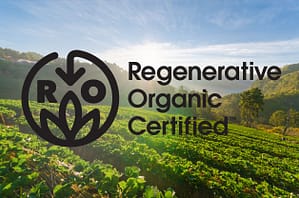

It’s trickier, but not impossible:
- Look for regenerative-forward brands like:
- Force of Nature Meats (meat eaters in your life)
- White Oak Pastures
- Lotus Foods Regenerative Rice
- Applegate’s humanely raised line
- Choose organic produce from smaller or local brands when possible
- Choose seasonal, fresh food because it usually needs less artificial help to grow and delivers more nutritional value to your plate.
- Google brands you buy often — some are moving toward regenerative practices without shouting about it (yet)
Online & CSAs
- CSA programs (community-supported agriculture) are amazing for this. You support local farms directly, often picking up a weekly box of whatever’s in season.
- Search for “regenerative CSA near me” or check listings through groups like Regeneration International or even the Kiss the Ground website.
Even if you make one small shift, you’re helping fuel demand for food that nourishes people and the planet.
🍽️ Cooking with Regenerative Foods: Start with What You Can
Let’s be real — most of us aren’t sourcing ingredients from a biodynamic food forest in the Andes. (If you are, please teach me your ways.)
But you can start cooking with regenerative foods right where you are. Whether that means your backyard garden, a Saturday morning farmers market run, or the bag of organic carrots you picked up at Trader Joe’s — it counts.
Here’s How to Start:
- Use what’s in season
Regenerative farms grow with the rhythms of nature. So the more you follow the seasons in your meals, the more likely you’re eating in alignment with soil-friendly practices. Bonus: it’s cheaper and tastier. - Compost your scraps
The veggie tops, peels, and ends from your cooking? Don’t toss them — give them back to the soil. (My backyard compost pile says thank you. My kids say “ew.”) - Shop small and local when possible
Your favorite zucchini stir fry or chickpea stew suddenly has climate-healing potential when the veggies come from a regenerative source. - Cook whole foods more often
Processed foods tend to rely on industrial monocrops. Whole plant ingredients (beans, grains, greens, roots) support simpler, more transparent supply chains — and they’re usually the ones regeneratively grown farms are producing.
A Few of My Favorite Regenerative-Friendly Dishes:
- Cherry Gorgonzola Salad 🍒 with Lemon Mustard Vinaigrette (with arugula, hello cover crop greens!)
- Garden-fresh Mexican Zucchini Corn Fritters with backyard herbs
- Roasted Veggies Chickpea Pasta (WFPB, high-protein) with seasonal veggies and chickpeas (a great way to use up your remaining veggies!)
You don’t need perfection — just a little progress. Every meal is a chance to say yes to food that feeds your body and the earth.
🌎 Why Regenerative Food Is a Climate Solution Hiding on Your Plate
Fighting climate change can feel overwhelming — like something that requires a government bill or a zero-waste lifestyle you just don’t have the time for. But what if one of the most powerful tools was sitting right on your plate?
Regenerative food is one of the most hopeful, tangible climate solutions we have… and it’s literally growing beneath our feet.
How Does It Work?
Plants naturally pull carbon dioxide from the air. That’s photosynthesis doing its thing. But when crops are grown in dead, compacted, tilled-up soil, that carbon doesn’t stay put — it escapes back into the atmosphere.
In contrast, regenerative farming locks that carbon in place. Healthy soil acts like a sponge — it holds water, stores nutrients, and draws down carbon, keeping it in the ground where it belongs.
And here’s the kicker: according to researchers (and the Kiss the Ground doc), if even a fraction of the world’s farms went regenerative, we could dramatically reduce atmospheric CO₂. Like… potentially reverse climate change levels of impact.
Your Fork Is a Force
Every bite you take sends a signal:
- To your gut — “let’s stay balanced”
- To your family — “let’s take care of ourselves”
- To the world — “let’s grow food in a better way”
You don’t need to overhaul your life. Just start small:
- One regenerative veggie swap
- One compost bin in the backyard
- One farmers market trip this month
The magic of regenerative food is that it’s not just about what you eat — it’s about what your food makes possible.
💚 Final Thoughts: Why I’m All In on Regenerative Food
If you’ve made it this far, you probably care about your health, your family, and the future of the planet — just like I do.
Learning about regenerative food changed the way I see my garden, my plate, and even my compost bin. It’s not about being perfect. It’s about being connected. To the soil. To our bodies. To each other.
You don’t have to grow everything yourself or make every meal from scratch. But what you can do is start small — ask where your food came from, choose something seasonal, compost a few scraps, or support a local farm that’s trying to do things differently.
This movement isn’t about guilt. It’s about regrowth — in every sense of the word.
💬 What’s one shift you’re excited to make after reading this?
Drop it in the comments — I’d love to cheer you on.
And if this post resonated with you, feel free to share it with a friend who’s curious about growing or eating more regeneratively. 🌱
📚 Sources and Resources:
- University of Washington Study: Soil-Friendly Practices Grow Healthier Food
https://www.washington.edu/news/2022/02/24/farms-following-soil-friendly-practices-grow-healthier-food-study-suggests - Kiss the Ground Documentary – Available on Netflix
- Common Ground Documentary – Available to rent on Apple TV, Amazon Prime, or YouTube
- Kiss the Ground’s Farmer Resource Directory – https://kisstheground.com/farmer-directory/
- Regeneration International – What Is Regenerative Agriculture?
https://regenerationinternational.org/why-regenerative-agriculture/

